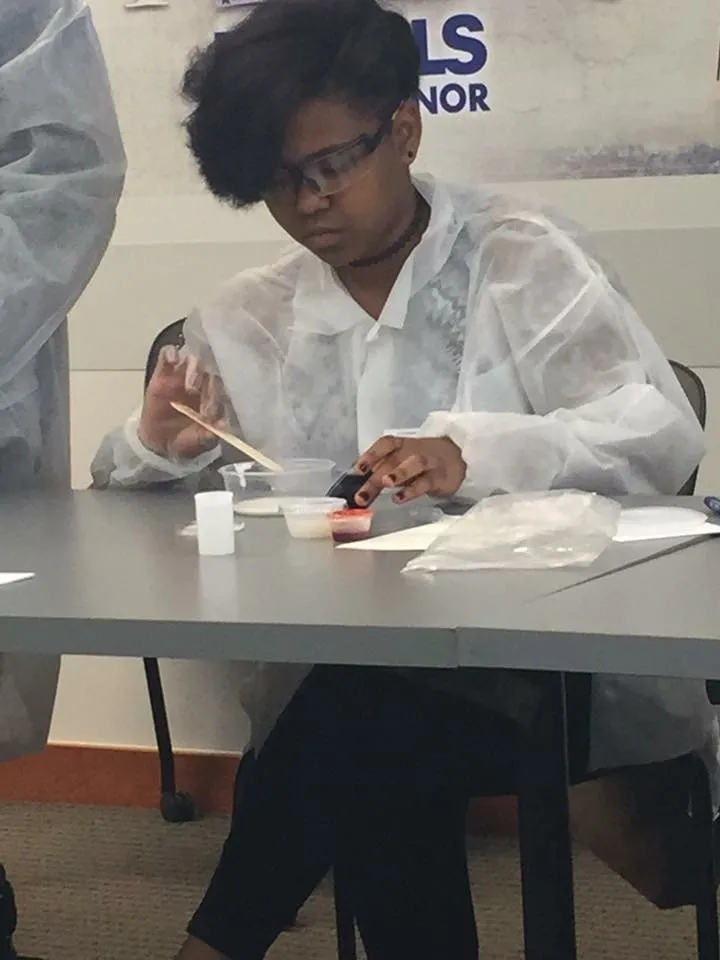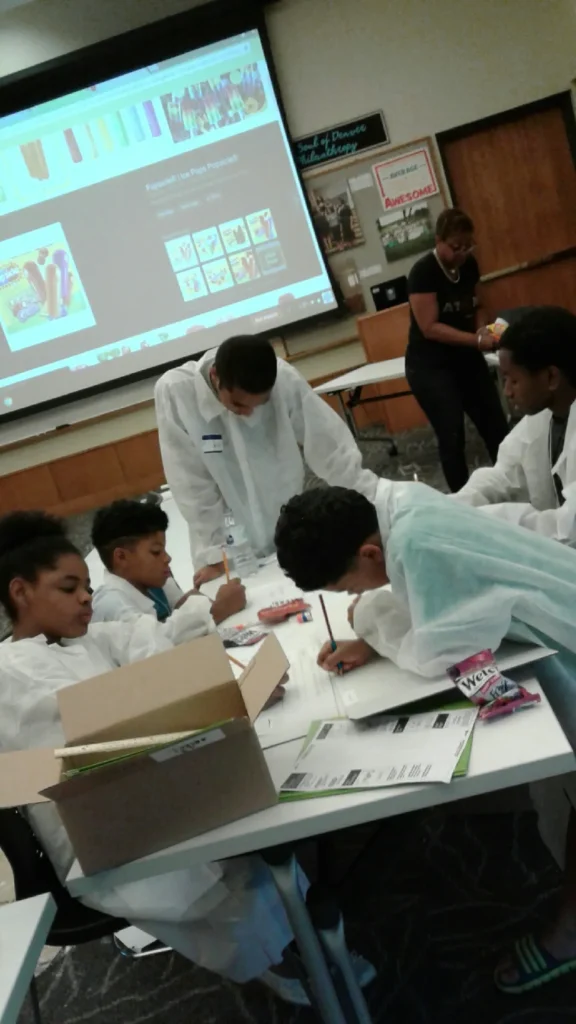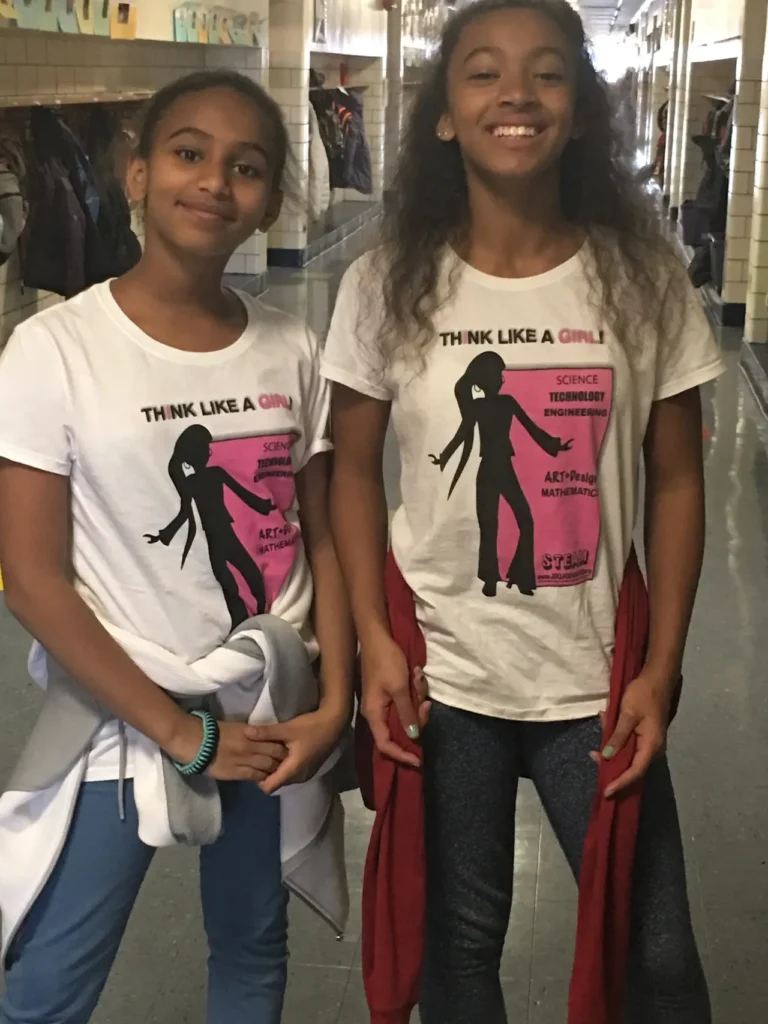NOTES FROM A STEAM GIRL by Toi Massey
WHO TOLD GIRLS they weren’t good at math and science? When Kennedy, my now 16 year old, was just a little thing, not even a year old, I would take an empty 16 oz plastic water bottle and force it under water, and as the water rushed into the bottle and forced the air out of the bottle, the resulting bubbles would catch her attention. The only thing I would mutter was “SCIENCE!” I would repeat this action until, eventually, she, too, started to do it. I would take a dab of yellow mustard and a dab of ketchup, mix the two together to get a secondary color, orange, and I would mutter “SCIENCE!” referencing the creation of a new substance and its new bright color! Before I knew it she was mixing and stirring and concocting all kinds of messes and tagging each new creation “SCIENCE!”


Girls are innately bright and creative and yet, due to no fault of our own, we are often discouraged from pursuing the very things that come naturally to us. Math and science are areas of study within which we excel, however, we are not often encouraged to push through the inevitable challenges while our male counterparts are encouraged to “figure it out” and therefore, they stick with disciplines that we often and prematurely abandon. Subconscious discouragement is the term used when adults and educators unintentionally redirect girls from pursuing the STEM disciplines by inadvertently discouraging them from sticking with math and hanging with the sciences. According to to a wonderful August 2018 article written by Colleen Ganley in Scientific American titled Are Boys Better Than Girls at Math?, we know that when it comes to standardized tests scores for math, results show that boys and girls perform with very little difference, most noted at the lower grade levels. What we do see, is that girls tend to have less positive math attitudes, higher level of math anxiety and lower level of math confidence in their math skills at higher grade levels. As a result, this fear of math finds that girls tend to move away from making the choice to enter into and study the STEM disciplines,especially engineering. So the value question becomes: “What tools might we use to change this?” There are many approaches that may be used to encourage girls, each whom have an innate propensity for math and science, a curiosity for investigation and problem solving. Let’s keep it simple and consider three (3) tailorable tools from which we can measure real success.
1. WORDS MATTER so choose yours carefully! When working with girls, know that they are no different than the boys when it comes to a desire to receive positive critique and validation from educators. Challenge the girls to stretch themselves, encourage them to make mistakes, validate their frustrations and embrace failure as learning opportunities. Make connections between the girls and women who made strong contributions in the STEM professions and how they leveraged math to do great things. You might say things like: “This is tough, but you’re tougher, smarter and you don’t quit; that’s what I admire about you! At one time NASA would hire really smart women that looked just like you. They called them Human Computers. These women were really strong in math but not without working hard to become strong in math. Girls do well in math and you can, too, and I am here to help you. We are a team and you are genius!”
2. LEVERAGE THE BOYS TO ENCOURAGE THE GIRLS! Create safe environments that reduce unhealthy competition and instead emphasize healthy collaboration. Immediately address peer language that would suggest girls don’t make strong teammates, build teams that empower girls to lead and co-captain, that emphasize the value of girls and of having gender and ethnically diverse teams.

3. Allow a girl to THINK LIKE A GIRL! Girls have a wonderfully innate characteristic of empathy that is too often targeted as having no place in the STEM professions. I call hogwash! It is within the STEM professions that the innate empathy of girls belongs! Girls bring to the table a desire to support and serve, they introduce solutions that consider downstream impact and when they are absent from the design and planning tables, outcomes reflect it. For example, when airbags were first introduced with the purpose of reducing fatalities following an automobile accident. Instead upon deployment the airbags had serious incidents of decapitation of youth and crushing the chests of small framed women.* When girls are at the engineering table and bing with them the concern and empathy that they have been blessed with by design, everyone wins as outcomes have a positive impact on society and quality of life. *It was more than 30 years after the introduction of Sierra Sam in 1949 before federal consumer child (1977) and female (1987) crash test dummies would would debut [Mary Bellis,History of Crash Test Dummies, February 2019] but not until the 2011 model year vehicle did federal regulators require automakers to use petite female crash dummies.[Lee Vinsel, December 2013]

